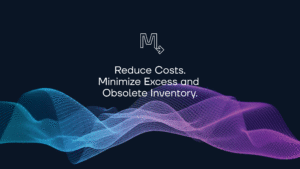Running a medical device company is hard. Training users on enterprise software is challenging. Crafting engaging and effective training content is also difficult. What happens when you try to build a training curriculum that combines all three? Yeah, it’s tough. But doing it isn’t impossible, especially if you avoid the major risks.
Here are 3 ways to avoid the biggest pitfalls with enterprise software training for medical device companies:
-
Risk: Disconnected workflows and software solutions.
Remedy: Integrate technology and process.
Why
Embrace the interdependence of technology and process. People who know the medical device supply chain know the myriad of variables that get in the way of efficiency. At Movemedical, we’ve seen our technology manage those variables and get amazing results. That doesn’t mean processes stop being complex. It means learning to depend on technology to handle the bulk of the complexity. This is the leap good training helps people make.
How
Instead of focusing exclusively on the technology and steps users take in the software, marry technology and process every step of the way. Make sure users walk away understanding how their jobs are changing, what parts they will continue to do as they have, and where they need to rely on technology to assist them. By illustrating what this looks like through real-world examples, scenarios, and exercises, training captures both the virtual and physical processes involved.
-
Risk: Users feel unprepared and overwhelmed.
Remedy: Prioritize hands-on training.
Why
For self-paced web content in particular, it’s easy to leave aside the hands-on components. That makes content creation a whole lot easier. The problem is that it ultimately shortchanges learners. People need to have done what you’ll want them to do on day one of go-live or they’ll be off to a rocky start. There’s no substitute for hands-on practice and repetition.
How
From e-Learning courses to in-person training, load up on hands-on exercises. Based on realistic situations, the hands-on portions give learners the chance to get into the system and apply their learning. Quizzes, assessments, and readiness checklists provide other ways to validate learning. But all of those start with ample opportunities to perform the processes that will become the new normal upon launch.
-
Risk: People aren’t committed to change.
Remedy: Explain why and emphasize benefits.
Why
People don’t connect with a series of process steps by themselves. They want to know how to do their work, and also why it matters that they do it that way. Many medical device companies have spent years perfecting existing processes, so you have to pull out all the stops and remove as many learning barriers as possible to adopt new methods.
How
Explaining how the software works and how users should use it is table stakes. To take training to the next level, communicate the purpose behind each step to get users committed to change. Focus intensely on explaining the design choices underlying both the technology and process. It doesn’t need to be a black box that people don’t understand. Communicate the benefits so that trainees buy into a new way of working and planning. They have to see the value for themselves and their organization.
I hope this gives you food for thought and helps you on your own software adoption journey!



